Shakespeare used symbolism extensively in his plays to add depth and layers of meaning. Today, modern theatre continues to use symbolic props, lighting, and costume choices to convey hidden meanings and themes. This adds richness to the narrative, encouraging the audience to engage more deeply with the performance.
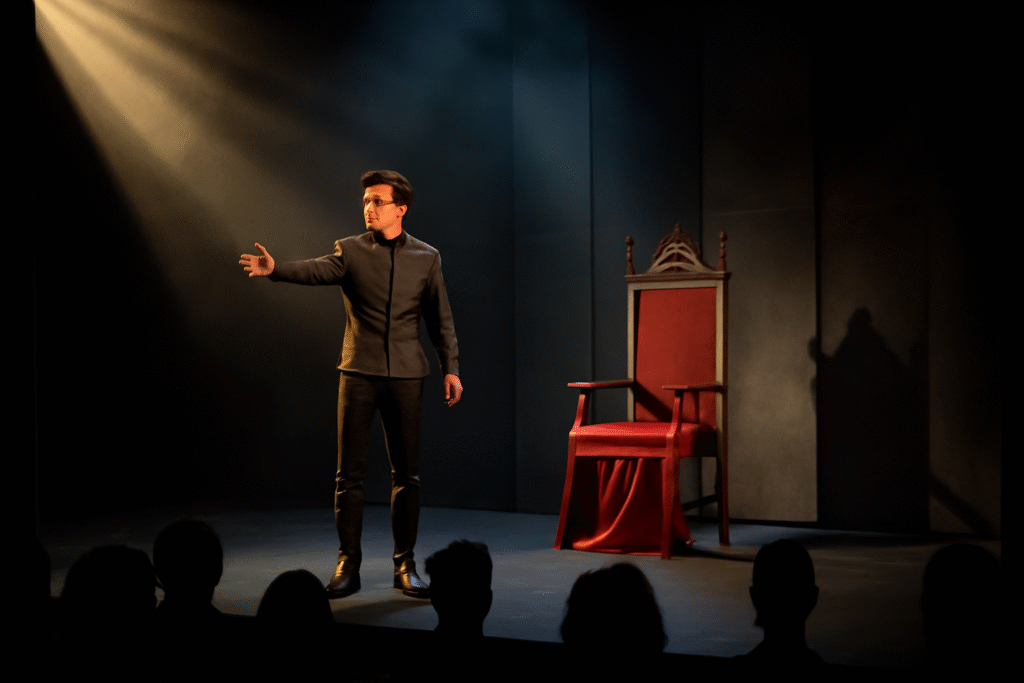
How the Impact of Shakespearean Stagecraft on Modern Theatre Shapes Today's Productions
Imagine stepping into a modern theatre where the lights dim, the actors move with purpose, and every gesture, every word, seems to pull you deeper into the story. This captivating experience isn’t just a product of cutting-edge technology or elaborate sets; it’s rooted in something much older. The impact of Shakespearean stagecraft on modern theatre has shaped the way we think about performance, space, and audience interaction. 🎭
But how exactly do techniques from the 16th century still influence productions today? From minimalist sets to bold actor movements, Shakespeare’s innovations continue to drive creative decisions in contemporary theatre. In this article, we’ll explore the lasting influence of his stagecraft, revealing how understanding these methods can elevate today’s productions. Keep reading to discover practical insights that can enhance your own theatrical experience! 💡
Table of Contents
Toggle1: Shakespeare’s Lasting Influence on Modern Theatre

Shakespeare’s stagecraft wasn’t just groundbreaking in his time—it continues to influence and shape modern theatre in profound ways. Whether you’re a director, actor, or designer, understanding how his techniques have carried through centuries can elevate your approach to contemporary productions. Let’s dive into how Shakespeare’s creative methods still impact modern theatre today. 🎭
Minimalist Design Meets Modern Innovation
Shakespeare’s productions often took place on bare stages, relying on the imagination of both actors and audience. Set design was minimal, and props were used symbolically to represent various locations or objects. This simplicity created a unique space for creativity and interpretation, focusing more on storytelling than on elaborate visuals.
How This Shapes Modern Theatre: Today, directors often use minimalist set designs to achieve the same effect. The focus remains on the actors and the emotional depth of the story rather than overwhelming the audience with excessive props or scenery. By combining minimalist designs with modern technology—like projections and creative lighting—directors can achieve a dynamic, visually engaging experience while keeping the emphasis on the narrative.
Engagement with the Audience: The Power of Connection
Shakespeare’s theatre was known for its close relationship between the actors and the audience. With no proscenium arch separating them, the actors frequently interacted with the crowd, speaking directly to them in soliloquies or encouraging their involvement in the action. This created a shared, immersive experience that made the audience feel like part of the play.
How This Shapes Modern Theatre: Many modern directors take inspiration from this direct interaction by breaking the “fourth wall”—a concept that separates performers from their audience. Immersive theatre and modern plays often invite the audience to participate or observe in unconventional ways, making them feel more connected to the story. Even in traditional performances, subtle engagement—like addressing the audience or making eye contact—can make the experience more intimate and impactful.
Physicality and Movement: Bold and Clear Expression
Shakespearean actors relied heavily on physicality to convey meaning, particularly since they performed in open-air theatres with no microphones. Every gesture and movement had to be clear, bold, and expressive enough to reach the entire audience. This emphasis on physicality helped to convey not just the words, but the emotion behind them.
How This Shapes Modern Theatre: Modern theatre still values the use of physicality and strong stage presence. Actors are often trained to use their bodies expressively, whether through large, clear gestures or more subtle movements. Directors frequently rely on physicality to express emotions that words alone might not capture. The boldness and clarity of movement, inspired by Shakespeare’s performances, continue to resonate in contemporary acting techniques.
Use of Language and Symbolism: Layers of Meaning
Shakespeare’s genius lay not only in his complex characters and riveting plots but also in his mastery of language. He crafted beautiful, poetic dialogues filled with rich metaphors and layered meanings. Shakespeare’s use of language often transcended the immediate meaning of the words, inviting deeper interpretation and connection.
How This Shapes Modern Theatre: Language and symbolism remain core to modern theatre. Playwrights and directors continue to explore the power of language to communicate both obvious and hidden meanings. Shakespeare’s influence can be seen in the way contemporary playwrights use metaphor, imagery, and layered dialogue to convey complex ideas and emotions. Even in modern adaptations of his works, the careful use of language remains key to their success.
2: Shakespearean Stagecraft Essentials
To truly understand how the impact of Shakespearean stagecraft on modern theatre shapes today’s productions, it’s important to first break down the core elements of his stagecraft. These timeless techniques have influenced how we design sets, use lighting, choreograph movements, and engage with the audience. Let’s explore the key components that made Shakespeare’s stagecraft so revolutionary. 🎭
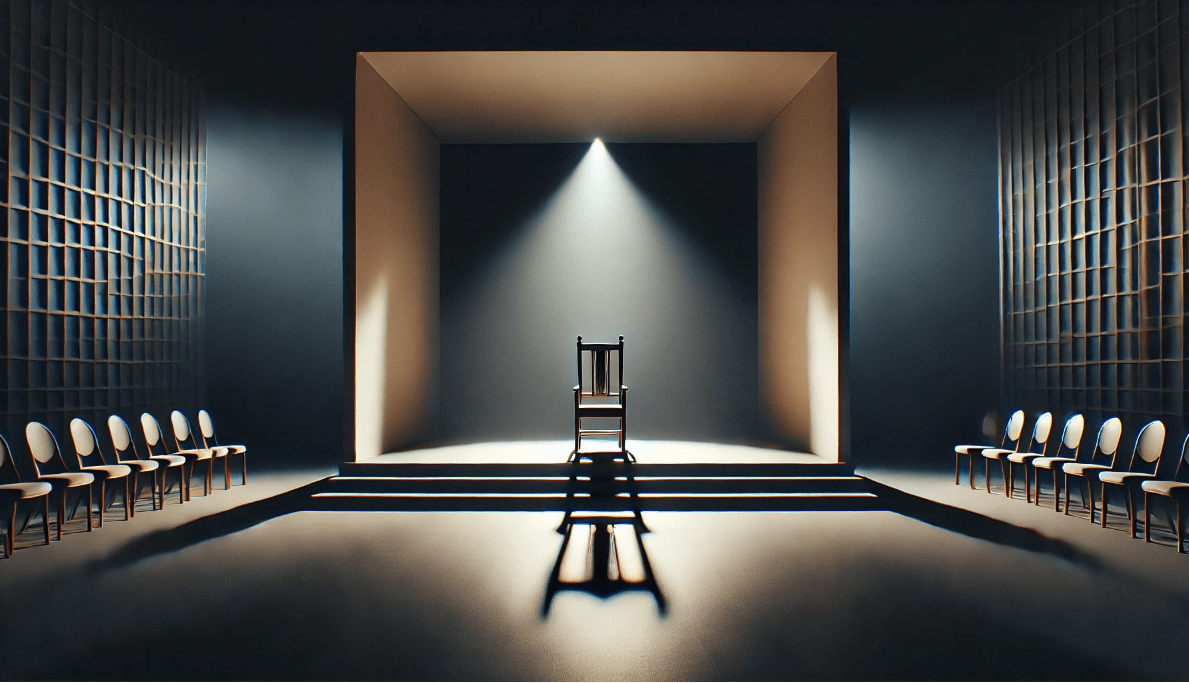
Minimalist Set Design: The Power of Suggestion
In Shakespeare’s time, stage designs were simple and flexible. Theatres like The Globe used basic set pieces, often just a few props, and relied heavily on the actors’ ability to create the world through their performances. With no elaborate backdrops or high-tech effects, the setting was conveyed through the language, costumes, and the actors’ movements.
Modern Take: Today’s designers still use minimalist sets to draw focus to the actors and the story. By using only a few key props or structures, the audience’s imagination fills in the rest, just as it did centuries ago. For example, a single chair might represent a king’s throne, or a few pieces of cloth can become a battlefield.
Lighting: Creating Atmosphere
Shakespeare didn’t have electric lights, but he still understood the power of light and dark to set the mood. Natural daylight illuminated most performances, but strategic use of torches or candles created dramatic shifts between scenes, evoking emotions like suspense or joy.
Modern Take: Lighting remains a cornerstone of stagecraft. Directors today use lighting to manipulate mood, guide the audience’s attention, and signify changes in time or place. From spotlights on a lone actor to the dramatic use of shadows, lighting allows us to shape the atmosphere of the play, much like Shakespeare did with his simple yet effective techniques.
The Actor’s Movement: Large and Purposeful
Theatre in Shakespeare’s time was loud, energetic, and physical. Actors were trained to project their voices across the open-air spaces, and their movements were bold and clear. Because of the lack of microphones and acoustics, actors used exaggerated gestures and physicality to communicate emotion and intention.
Modern Take: In modern theatre, the use of clear, purposeful movement is still vital. While microphones and acoustics have improved, actors continue to rely on body language and gestures to convey meaning. Directors often guide actors to use expansive gestures, ensuring that even subtle emotions are communicated effectively to the audience.
Engaging the Audience: Breaking the Fourth Wall
Shakespeare’s plays were designed to involve the audience directly. The actors often spoke directly to the crowd in soliloquies, addressing them as though they were part of the action. The energy between the performers and the audience was immediate and personal.
Modern Take: Today’s theatre continues this tradition, with many productions choosing to break the fourth wall. This might include actors addressing the audience, inviting them into the story, or even interacting with them during a performance. Whether it’s in an immersive theatre setting or through direct audience engagement, the influence of Shakespeare’s audience interaction is still stro
3: How Shakespearean Stagecraft Shapes Modern Productions
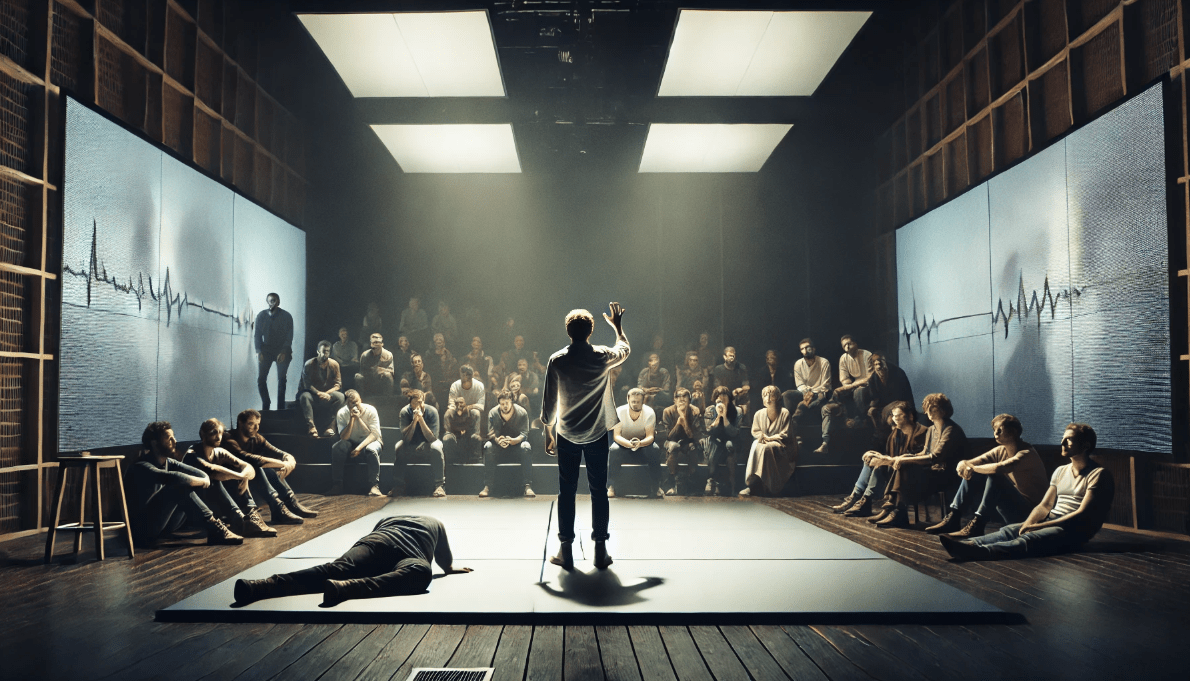
Shakespeare’s innovative stagecraft has had a lasting influence on modern theatre, shaping how productions are designed, directed, and performed today. From the minimalist approach to set design to the bold use of physicality and direct audience engagement, his techniques continue to guide contemporary theatre. In this section, we’ll explore how Shakespearean stagecraft directly impacts modern productions and how you can apply these timeless methods to your own work. 🎭
Minimalist Set Design: Less is More
In Shakespeare’s day, set designs were simple yet effective. Productions often featured little more than a few props or a bare stage, relying on the actors and language to create the world of the play. This minimalist approach focused attention on the performance rather than distracting from it with excessive set decoration.
How This Shapes Modern Productions: Today, many productions embrace minimalist set designs for the same reasons. Directors and designers use symbolic elements like a single chair or a few curtains to convey an entire scene. This approach invites the audience’s imagination to fill in the details, just as Shakespeare’s audiences did. By keeping the set simple, the focus remains on the actors, the story, and the emotions conveyed through their performances.
Tip: If you’re designing a modern production, consider how you can use minimal props or sets to leave room for creativity and imagination. Focus on essential elements that enhance the story without overwhelming the audience.
Physicality: Clear, Purposeful Movement
Shakespeare’s actors had to be physically expressive to reach the entire audience in open-air theatres without microphones. Every gesture and movement needed to be bold, clear, and full of intention. This emphasis on physicality was key to conveying emotion and meaning, as words alone weren’t always enough to communicate complex feelings.
How This Shapes Modern Productions: In today’s theatre, actors still rely on clear physicality to express emotions. Directors often encourage expansive, intentional movement to ensure that the audience understands the emotion or intent behind each action. Physicality also plays a crucial role in enhancing dramatic moments and connecting the audience to the characters.
Tip: If you’re an actor or director, work on creating purposeful, clear movements that enhance the emotional impact of the performance. Even subtle gestures can convey powerful emotions when done intentionally.
Engaging the Audience: Breaking the Fourth Wall
Shakespeare’s theatre wasn’t a passive experience for the audience. Actors often broke the fourth wall, engaging directly with the viewers. Whether it was through soliloquies, direct addresses, or physical interaction, Shakespeare’s plays encouraged an active relationship between the performers and the audience.
How This Shapes Modern Productions: Modern theatre continues this tradition by breaking the fourth wall in a variety of ways. Immersive theatre, in particular, invites the audience to participate in the story, blurring the lines between performer and viewer. Even in more traditional settings, many productions use direct address or subtle cues to engage the audience, making them feel involved and connected to the action on stage.
Tip: In your productions, consider how you can engage the audience directly—whether through monologues, audience participation, or simply by encouraging actors to make eye contact. This creates a more intimate, immersive experience.
Lighting: Shaping Mood and Atmosphere
Although Shakespeare didn’t have the advanced lighting technology we have today, he understood the power of light and shadow to create mood. In the open-air Globe Theatre, natural light was used to set the tone for each scene, while candles or torches were employed to add atmosphere during darker moments.
How This Shapes Modern Productions: Lighting remains one of the most powerful tools in modern theatre. Directors use lighting to transition between scenes, create tension, and evoke specific emotions. Whether it’s through the use of shadows, spotlights, or dramatic color changes, lighting helps to set the stage and guide the audience’s emotional response.
Tip: When designing lighting for your production, think about how the light can influence the audience’s perception of the scene. Use it strategically to shift mood, highlight key moments, or create suspense.
Symbolism: Layered Meaning in Every Element
Shakespeare’s use of symbolism—through language, props, and actions—was a hallmark of his stagecraft. Every object, gesture, or word had deeper meaning, adding layers to the story. This approach allowed audiences to interpret the play in multiple ways, engaging with the material on a deeper level.
How This Shapes Modern Productions: Modern directors continue to use symbolism in much the same way. A simple prop or a specific gesture can carry deep meaning, allowing the audience to connect with the play on a more intellectual or emotional level. Whether through symbolic lighting, set elements, or physical actions, symbolism enriches the storytelling experience.
Tip: Look for opportunities to incorporate symbolic elements into your production. A prop, a color, or a specific movement can add depth and invite the audience to explore the play beyond its surface level.
4. Practical Applications in Today’s Theatre
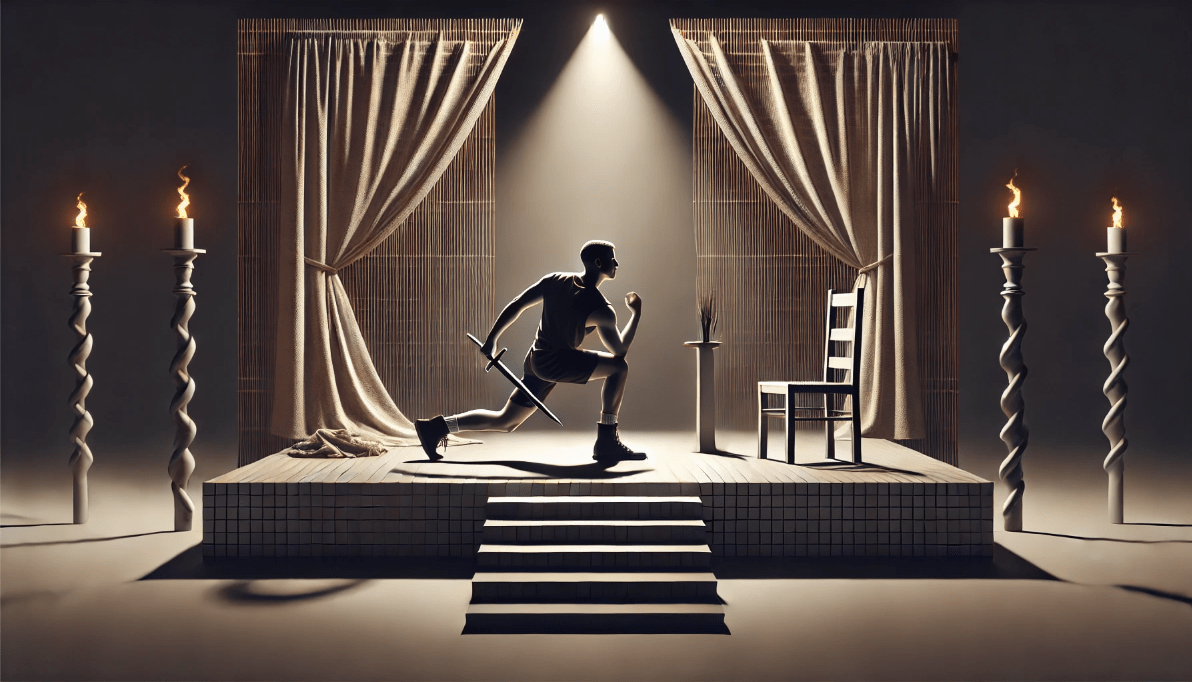
Shakespearean stagecraft is more than just an inspiring piece of history—it’s an invaluable toolkit for today’s theatre practitioners. By understanding and applying these techniques, you can create productions that are both timeless and fresh. In this section, we’ll provide practical, actionable tips on how to incorporate the essence of Shakespeare’s stagecraft into modern productions. 🎭
Designing Sets Inspired by Shakespearean Simplicity
Shakespeare’s minimalistic approach to set design had a lasting effect on modern theatre. His stages were often bare, relying on the actors’ performances and the audience’s imagination to create the setting.
Practical Tip: When designing a modern set, consider stripping it down to the essentials. Focus on using symbolic props—such as a single chair, a piece of fabric, or a strategic light placement—to represent key locations or objects. This allows the audience’s imagination to fill in the gaps while keeping the production dynamic and focused on the actors.
Example: A simple platform can serve as both a throne and a battlefield, or a single light shining on an actor can signify a moment of intense emotion or transformation.
Emphasizing Physicality and Movement
Shakespeare’s actors were trained to use their bodies to convey meaning, especially given the open-air settings where they performed. Today, physicality remains an essential part of effective stagecraft.
Practical Tip: Encourage actors to use deliberate, expressive movement to communicate emotion, even in modern, smaller venues. This doesn’t mean over-the-top gestures, but purposeful actions that reinforce the dialogue and emotional stakes.
Example: A subtle gesture, such as a hand on the heart or a slight bow of the head, can speak volumes in conveying inner turmoil or respect. Encourage your actors to embrace movement as a tool to amplify the narrative.
Engaging the Audience: Embrace the “Fourth Wall” Break
Shakespeare’s productions often had actors speaking directly to the audience, creating an immediate connection between performers and viewers. This “fourth wall” break helped build intimacy and energy in the performance.
Practical Tip: In your production, incorporate moments where actors engage with the audience—whether through direct addresses, breaking character, or even inviting them into the action. This makes the experience more interactive and immersive.
Example: In a modern adaptation, you might have an actor walk down the aisles, sharing a monologue directly with the audience, creating a sense of closeness and urgency.
Lighting as an Emotional Tool
While Shakespeare’s actors performed in natural daylight, the strategic use of light was still a powerful tool for creating atmosphere. Today, lighting design is crucial for setting the mood and signaling changes in time or location.
Practical Tip: Use lighting creatively to manipulate the audience’s emotional experience. Whether you’re aiming for suspense, romance, or a sense of foreboding, lighting can enhance the mood without the need for elaborate sets.
Example: In a scene of confrontation, a harsh, focused spotlight on one actor can create tension, while dimming the rest of the stage suggests isolation or vulnerability. Think about how lighting can influence the audience’s perception of the story’s tone and timing.
Symbolism and Subtext in Every Element
Shakespeare’s works were full of symbolic meaning, from props to language. Modern theatre continues to thrive on layered subtext and symbols that deepen the audience’s understanding.
Practical Tip: Infuse your production with symbolic elements that add depth to the story. Whether through props, costumes, or even sound effects, use symbolism to suggest hidden meanings and themes.
Example: A red scarf could symbolize love or danger, depending on its context. A ringing bell might signify an impending doom or a call to action. Each small detail should serve a larger purpose, enhancing the audience’s connection to the narrative.
5. The Future of Shakespearean Stagecraft in Modern Theatre
As theatre continues to evolve, the influence of Shakespearean stagecraft remains a guiding force for modern productions. Despite advances in technology and changes in audience expectations, the core principles that Shakespeare pioneered still resonate today. So, what does the future hold for this timeless approach to theatre? Let’s explore how these techniques will shape productions in the years to come. 🎭
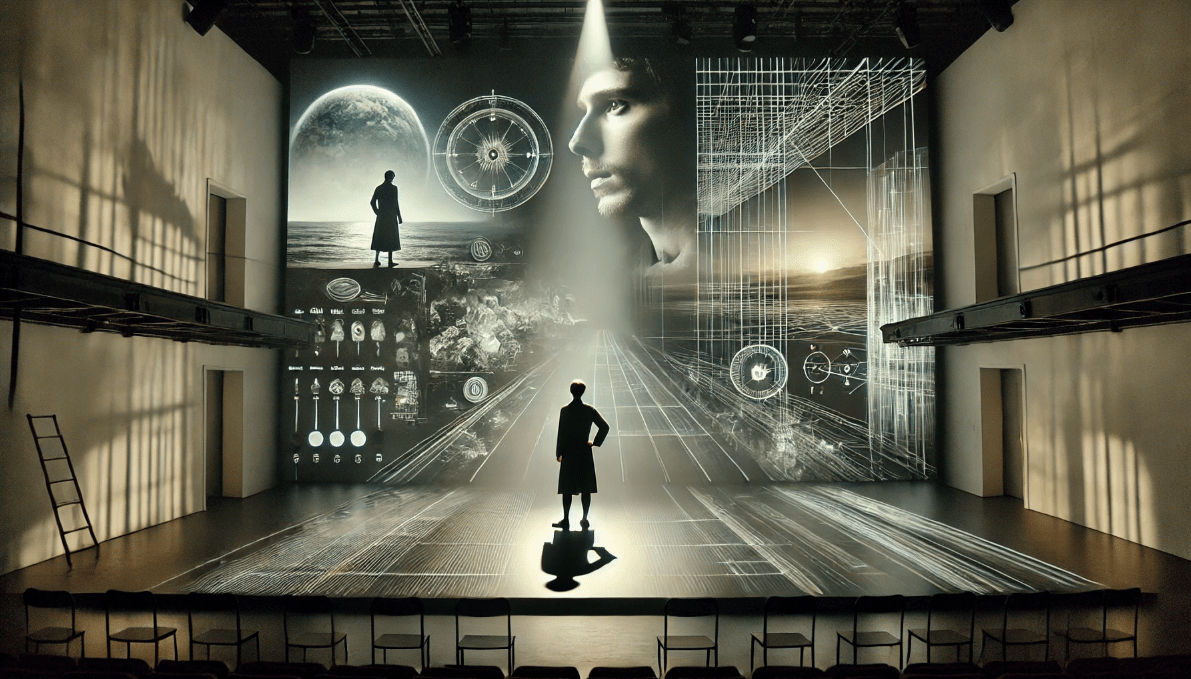
Embracing Technology While Honoring Tradition
In an age where technology is advancing rapidly, it might seem like Shakespeare’s minimalist sets and reliance on imagination are outdated. However, the future of theatre lies in blending cutting-edge technology with the core principles of Shakespeare’s stagecraft. Directors and designers are using projections, virtual sets, and digital effects to enhance storytelling, while still maintaining the simplicity and emotional impact that Shakespeare valued.
Practical Tip: Use technology to enhance the emotional core of the story, not to distract from it. For example, projections can be used to suggest settings or shift moods without overshadowing the actors’ performances.
Example: A minimalist stage with a single prop and digital projections can evoke the vastness of a battlefield or the intimacy of a private conversation—without cluttering the stage.
Immersive and Interactive Experiences
Shakespeare’s theatre was all about audience interaction. In today’s world, immersive theatre is gaining popularity, where the audience becomes part of the performance, either by moving through the space or influencing the action. This trend is a natural progression from the direct engagement Shakespeare had with his audiences.
Practical Tip: Consider how your production can invite audience participation or blur the lines between performers and viewers. Whether through interactive moments or using the entire venue as the stage, breaking down the barriers between the stage and the audience can create a unique, memorable experience.
Example: A modern production of “Macbeth” might have the audience follow the actors through different rooms or participate in decision-making, just as Shakespeare’s audiences were drawn into the drama unfolding before them.
Physicality and Movement as Key to Expression
The emphasis on clear physicality, which was essential in Shakespeare’s time, remains just as crucial today. While technology and microphones have improved sound and visual effects, the need for strong physical presence and expressive movement is still key to effective performance.
Practical Tip: In the future, physicality will continue to be essential in creating memorable performances. Train your actors to use movement intentionally, making every gesture meaningful and connected to the story’s emotional beats.
Example: A modern actor may use stylized movement to convey abstract emotions—like using slow, deliberate motions to represent the inner turmoil of a character—just as Shakespeare’s actors did to communicate meaning without relying on dialogue alone.
Symbolism and Meaning in a Complex World
As society becomes more complex, the use of symbolism in theatre will continue to play an important role in reflecting the world around us. Shakespeare’s works were rich in metaphor and symbolism, allowing for multiple layers of meaning. This trend is likely to continue, as modern audiences seek deeper connections to the stories being told.
Practical Tip: In future productions, infuse more layers of meaning into your set design, props, costumes, and even lighting. Every element can carry symbolic weight, helping to deepen the audience’s emotional and intellectual engagement with the story.
Example: A simple object—a broken mirror or a red scarf—might symbolize themes of identity, love, or destruction in a modern reimagining of a Shakespearean play. This adds a level of richness and depth to the experience.
Why Shakespearean Stagecraft Will Endure
Shakespeare’s techniques—his use of minimalism, physicality, direct audience engagement, and symbolism—are not only relevant today but will continue to shape the future of theatre. As the industry embraces new technologies and storytelling methods, these core principles will serve as the foundation for creating impactful, emotionally resonant performances.
By blending the timeless aspects of Shakespearean stagecraft with modern innovations, theatre makers can create dynamic productions that speak to contemporary audiences while honoring the past. Whether you’re an actor, director, or designer, understanding how Shakespeare’s stagecraft continues to influence modern theatre will help you craft more powerful and meaningful work for years to come. 🌟
The Enduring Legacy of Shakespearean Stagecraft
Shakespeare’s impact on modern theatre is undeniable, and his stagecraft continues to shape how we design, perform, and experience theatre today. From minimalist sets that spark the imagination to the bold use of physicality and the power of audience engagement, the timeless principles of Shakespeare’s craft offer valuable lessons for theatre makers at every level. 🎭
As we’ve seen, embracing these techniques in modern productions doesn’t mean sticking to the old ways; rather, it’s about blending tradition with innovation. Whether you’re experimenting with cutting-edge technology or focusing on clear, expressive physicality, Shakespeare’s approach offers a solid foundation for creating compelling and impactful theatre. ✨
By understanding and applying the impact of Shakespearean stagecraft on modern theatre, you can enhance your own work, whether you’re a director, actor, designer, or just an enthusiastic theatre lover. These techniques are not just historical relics; they’re living, breathing aspects of theatre that can elevate any production.
Frequently Asked questions (FAQs)
1. What is Shakespearean stagecraft and how does it influence modern theatre?
Shakespearean stagecraft refers to the techniques used in Shakespeare’s plays, such as minimalist set designs, the use of physicality and movement, direct audience engagement, and symbolic lighting. These elements continue to influence modern theatre by focusing on storytelling, emotional connection, and audience immersion. Today, theatre makers still draw on these principles to create compelling, dynamic performances.
2. How did Shakespeare use set design to enhance his plays?
Shakespeare’s set designs were minimalist, often with very few props or backdrops. The simplicity of the set allowed the audience to focus on the actors and the language, encouraging imagination. This approach continues to inspire modern directors to use symbolic and minimalistic sets that focus on storytelling rather than elaborate designs.
3. Why is physicality important in Shakespearean theatre and modern productions?
Physicality was essential in Shakespearean theatre because actors needed to project their voices and emotions without microphones in open-air theatres. Today, physical movement remains vital as it helps actors communicate emotions and intentions more clearly. Directors still emphasize purposeful gestures and body language to enhance performance and connect with the audience.
4. How does Shakespeare's technique of breaking the fourth wall impact modern theatre?
Shakespeare frequently broke the fourth wall by having actors speak directly to the audience, creating an interactive and engaging experience. This technique is still widely used in modern theatre, especially in immersive productions, where audience members are invited to participate or engage with the actors, making the experience more personal and immersive.
5. How do lighting and atmospheric effects from Shakespeare’s time influence modern theatre?
Though Shakespeare didn’t have modern lighting technology, he used natural light and candles to create mood and atmosphere. Today, lighting continues to play a key role in modern theatre, with directors using it to shape emotional tones, signal scene transitions, and enhance the overall experience of the play.
6. Can Shakespeare’s minimalist set designs be applied to modern theatre?
Yes, Shakespeare’s minimalist approach to set design is still widely used in modern theatre. Directors often use simple, symbolic props and sets to allow the actors and the story to take center stage. This approach can create a more intimate and focused performance, engaging the audience’s imagination.
7. How do modern theatre productions balance technology with Shakespearean stagecraft?
Modern theatre productions often incorporate advanced technology like projections and digital effects while maintaining the core principles of Shakespearean stagecraft. For example, minimalist sets combined with digital projections can evoke settings and emotions without overshadowing the performance, staying true to Shakespeare’s focus on storytelling.
